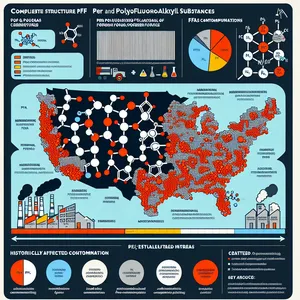Understanding PFAS: Origins and Impact
Often referred to as 'forever chemicals' due to their persistence in the environment, PFAS have been a part of modern life since the 1940s. Their water and grease resistance made them popular in numerous applications, from kitchen products to industrial processes. However, their environmental and health impacts have raised serious concerns.
The recent surge in investigations and research around Per- and polyfluoroalkyl substances (PFAS) has highlighted their alarming prevalence and the insidious nature of their contamination. With their ability to persist in the environment and accumulate in human and animal tissues, the urgent call for action against these chemicals has never been clearer.
Recent studies have demonstrated the widespread presence of PFAS in drinking water sources across the globe, underscoring the urgency of addressing this issue. The implications of these findings are profound, linking PFAS exposure to a variety of health problems, including cancer, thyroid disease, immune system complications, and developmental issues in children. The regulatory landscape concerning PFAS is rapidly evolving, with several countries moving to ban or severely restrict their use in consumer products and industrial applications.
In parallel, technological advancements in detecting and removing PFAS from the environment have provided a glimmer of hope. Cutting-edge filtration systems and remediation techniques are being developed and deployed, aiming to reduce PFAS levels in contaminated water sources and soil. However, these efforts face significant challenges, not least the sheer scale of contamination and the complexity of completely eradicating these chemicals.
Public awareness and action on PFAS contamination have grown, with communities around the world demanding more rigorous testing, regulation, and cleanup efforts. Governments and environmental agencies have responded by launching investigations, tightening regulations, and funding research into alternative materials that could replace PFAS in various applications.
The private sector is also playing a critical role, with some companies leading the way in eliminating PFAS from their products and supply chains. These efforts are complemented by innovative startups that are developing PFAS-free materials and technologies, showcasing the potential for a future less reliant on these harmful chemicals.
Explore More
The fight against PFAS contamination is at a critical juncture. With new research unearthing the far-reaching impacts of these chemicals, and emerging technologies offering paths to mitigate their presence, the collective response from governments, industry, and the public will determine the path forward. Vigilance and action are paramount in addressing the complex challenges posed by PFAS to our health and environment.
